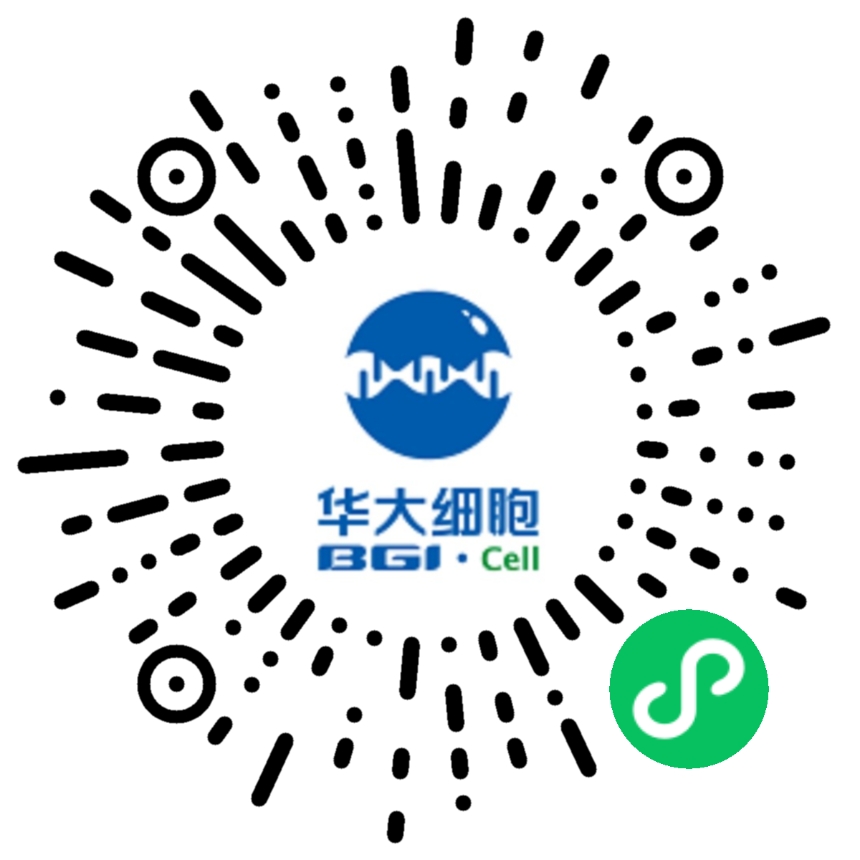 人脐带间充质干细胞应用于肝移植患者的观察
人脐带间充质干细胞应用于肝移植患者的观察
摘要:
背景:近年来间充质干细胞的免疫调节作用可被应用于诱导机体免疫耐受研究。
目的:评估脐带间充质干细胞应用于肝移植患者的安全性和可行性。
方法:培养人脐带间充质干细胞并进行鉴定。经医学伦理委员会同意后,将总计 50 例患者经 1∶1 的比例按入组时间随机分入试验组和对照组,每组 25 例。试验组分别在术中门静脉灌注及术后第 3 天给予颈内静脉输注脐带间充质干细胞,剂量为 1×106/kg(制备成 50 mL 的细胞悬液)。两组患者均采用标准免疫抑制方案。术前,术后第 3,7 天,术后第 1,2,3,6,12 个月检测血生化、免疫功能指标,统计急、慢性排斥反应发生率,感染发生率,移植相关并发症发生率。
结果与结论:①与对照组相比,术后第 3,7 天试验组外周血的 CD4+CD25+(调节性 T 细胞)细胞比例高于对照组,差异有显著性意义(P < 0.05),CD4+(辅助性/诱导性 T 细胞)细胞比例及 CD4+/CD8+ T 淋巴细胞的比值低于对照组,差异有显著性意义(P < 0.05);②与对照组相比,试验组谷丙转氨酶、总胆红素水平差异无显著性意义(P > 0.05);③试验组术后肝功能异常事件的发生率明显低于对照组,差异有显著性意义(P < 0.05);④两组移植后相关并发症的发生率、感染发生率差异无显著性意义(P > 0.05);⑤以上结果提示,肝移植术后静脉输注脐带间充质干细胞安全可行,早期可促进 CD4+CD25+(调节性 T 细胞)的增殖和活化,降低 CD4+(辅助性/诱导性 T 细胞)比例及 CD4+/CD8+ T 淋巴细胞的比值,进而改善肝移植受者免疫状态。
 静脉输注人脐带间充质干细胞治疗慢性失眠的临床观察
静脉输注人脐带间充质干细胞治疗慢性失眠的临床观察
摘要:
目的:观察人脐带间充质干细胞移植治疗慢性失眠的有效性和安全性。方法:选择慢性失眠病人39例,随机分为移植组19例,对照组20例,移植组给予人脐带间充质干细胞移植治疗1次,对照组采用阿普唑仑口服1月,两组患者均采用SF-36健康调查简表和匹兹堡睡眠质量指数来评价临床疗效,两组患者均随访观察12个月。结果:①细胞移植组患者在细胞移植治疗后1个月生活质量评分和睡眠质量评分明显好于治疗前,并在后续的随访中持续好于治疗前;对照组口服阿普唑仑治疗后2周睡眠质量评分即开始明显好于治疗前,但治疗后3个月患者的生活质量及睡眠质量评分出现下降,且同治疗前无差异,并持续到随访结束;②两组比较发现,治疗后2周,对照组的睡眠质量评分明显高于移植组,治疗后1个月两组睡眠质量和生活质量评分无差异,治疗后2个月细胞移植组的睡眠质量评分明显好于对照组,并持续到随访结束。治疗后3个月移植组的生活质量评分明显好于对照组,并持续到随访结束;③阿普唑仑停药后对照组患者有80%出现失眠症状的反弹,而细胞移植组患者经一次治疗患者的睡眠质量和生活质量改善作用可持续12个月,并且无明显不良反应。结论:人脐带间充质干细胞静脉输注治疗可显著改善慢性失眠患者的睡眠质量和生活质量,移植后1个月起效,一次治疗作用可持续达1年之久。
 Potential of Allogeneic Adipose-Derived Stem Cell – Hydrogel Complex for Treating Diabetic Foot Ulcers
Potential of Allogeneic Adipose-Derived Stem Cell – Hydrogel Complex for Treating Diabetic Foot Ulcers
Abstract:
Mesenchymal stem cells (MSCs) may hold great promise for treating diabetic wounds. However, it is difficult for a clinician to use MSCs because they have not been commercialized. Meanwhile, a new commercial drug that contains adipose-derived stem cells (ASCs) has been developed. The purpose of this study was to examine the potential of allogeneic ASC sheets for treating diabetic foot ulcers. Fifty-nine patients with diabetic foot ulcers were randomized to either ASC treatment group (n = 30) or control group treated with polyurethane film (n = 29). Either allogeneic ASC sheet or polyurethane film was applied on diabetic wounds weekly. These wounds were evaluated for a maximum of 12 weeks. Complete wound closure was achieved for 73% in the treatment group and 47% in the control group at week 8. Complete wound closure was achieved for 82% in the treatment group and 53% in the control group at week 12. Kaplan-Meier median times to complete closure were 28.5 and 63.0 days for the treatment group and the control group, respectively. There were no serious adverse events related to allogeneic ASC treatment. Thus, allogeneic ASCs might be effective and safe to treat diabetic foot ulcers.
摘要:
间充质干细胞(MSCs)为治疗糖尿病人伤口带来了希望。然而由于尚未商业化,临床医师很难使用到MSCs。与此同时,一种含有脂肪源干细胞(ASCs)的新型商业药物已经问世。本研究旨在探讨异源的ASCs片剂治疗糖尿病人足部溃疡的可能性。59例糖尿病足溃疡患者随机分为ASCs治疗组(n=30)和对照组(n=29),每周治疗组患者采用ASCs片剂片,而对照组每周采用聚氨酯薄膜治疗。对这些伤口进行为期12周的评估。在第8周的时候,治疗组73%伤口完全愈合,对照组为47%。第12周,治疗组82%伤口完全愈合,对照组53%。Kaplan-Meier分析表明,治疗组和对照组伤口完全愈合的中位数分别为28.5天和63.0天。在应用异源脂肪干细胞治疗过程中并无严重不良反应。因此,采用异源脂肪干细胞治疗糖尿病足部溃疡可能是一种安全有效的方法。
 Neural Stem Cell Therapy Aiming at Better Functional Recovery After Spinal Cord Injury
Neural Stem Cell Therapy Aiming at Better Functional Recovery After Spinal Cord Injury
Abstract:
Injury to the spinal cord causes transection of axon fibers and neural cell death, resulting in disruption of the neural network and severe functional loss. Reconstruction of the damaged neural circuits was once considered to be hopeless as the adult mammalian central nervous system has very poor ability to regenerate. For this reason, there is currently no effective therapeutic treatment for spinal cord injury (SCI). However, with recent developments in stem cell research and cell culture technology, regenerative therapy using neural stem cell (NSC) transplantation has rapidly been developed, and this therapeutic strategy makes it possible to rebuild the destroyed neural circuits. In this review, we discuss the recent breakthroughs in NSC transplantation therapy for SCI.
摘要:
脊髓损伤引起轴突纤维横断和神经细胞死亡,导致神经网络中断和功能丧失。重建受损的神经回路曾经被认为是毫无希望的,因为成年哺乳动物中枢神经系统几乎没有再生能力。因此,目前尚无有效的治疗脊髓损伤(SCI)的方法。然而,随着干细胞研究和细胞培养技术的进步,借助神经干细胞(NSC)移植的再生医学迅速发展,使得神经回路重建成为可能。在此综述中,我们讨论了神经干细胞移植应用于治疗脊髓损伤的研究进展。
 Mesenchymal Stem Cell-Based Immunomodulation Properties and Clinical Application
Mesenchymal Stem Cell-Based Immunomodulation Properties and Clinical Application
Abstract:
Mesenchymal stem cells (MSCs) are multipotent stem cells characterized by self-renewal, production of clonal cell populations, and multilineage differentiation. They exist in nearly all tissues and play a significant role in tissue repair and regeneration. Additionally, MSCs possess wide immunoregulatory properties via interaction with immune cells in both innate and adaptive immune systems, leading to immunosuppression of various effector functions. Numerous bioactive molecules secreted by MSCs, particularly cytokines, growth factors, and chemokines, exert autocrine/paracrine effects that modulate the physiological processes of MSCs. These invaluable virtues of MSCs provide new insight into potential treatments for tissue damage and inflammation. In particular, their extensive immunosuppressive properties are being explored for promising therapeutic application in immune disorders. Recently, clinical trials for MSC-mediated therapies have rapidly developed for immune-related diseases following reports from preclinical studies declaring their therapeutic safety and efficacy. Though immunotherapy of MSCs remains controversial, these clinical trials pave the way for their widespread therapeutic application in immune-based diseases. In this review, we will summarize and update the latest research findings and clinical trials on MSC-based immunomodulation.
摘要:
间充质干细胞(MSCs)是以自我更新、克隆细胞群的产生和多向分化为特征的多能干细胞。它们几乎存在于所有组织,并在组织修复和再生中发挥重要作用。此外,间充质干细胞通过与免疫细胞的相互作用具有广泛的免疫调节特性,从而导致各种效应因子的免疫抑制功能。MSCs分泌的许多生物活性分子,特别是细胞因子、生长因子和趋化因子,发挥调节MSCs生理过程的自分泌/旁分泌作用。 MSCs的这些特性为组织损伤和炎症治疗提供了新的解决思路。目前针对其广泛免疫抑制特性的研究已在进行,以期为免疫相关疾病提供治疗方案。在临床前研究报告其治疗安全性和疗效后,MSCs介导的治疗的临床试验迅速发展为免疫相关疾病。虽然MSCs的免疫治疗仍有争议,但这些临床试验为其广泛的应用打下了基础。在本综述中,我们总结了基于MSCs免疫调节的最新研究成果和临床试验。




